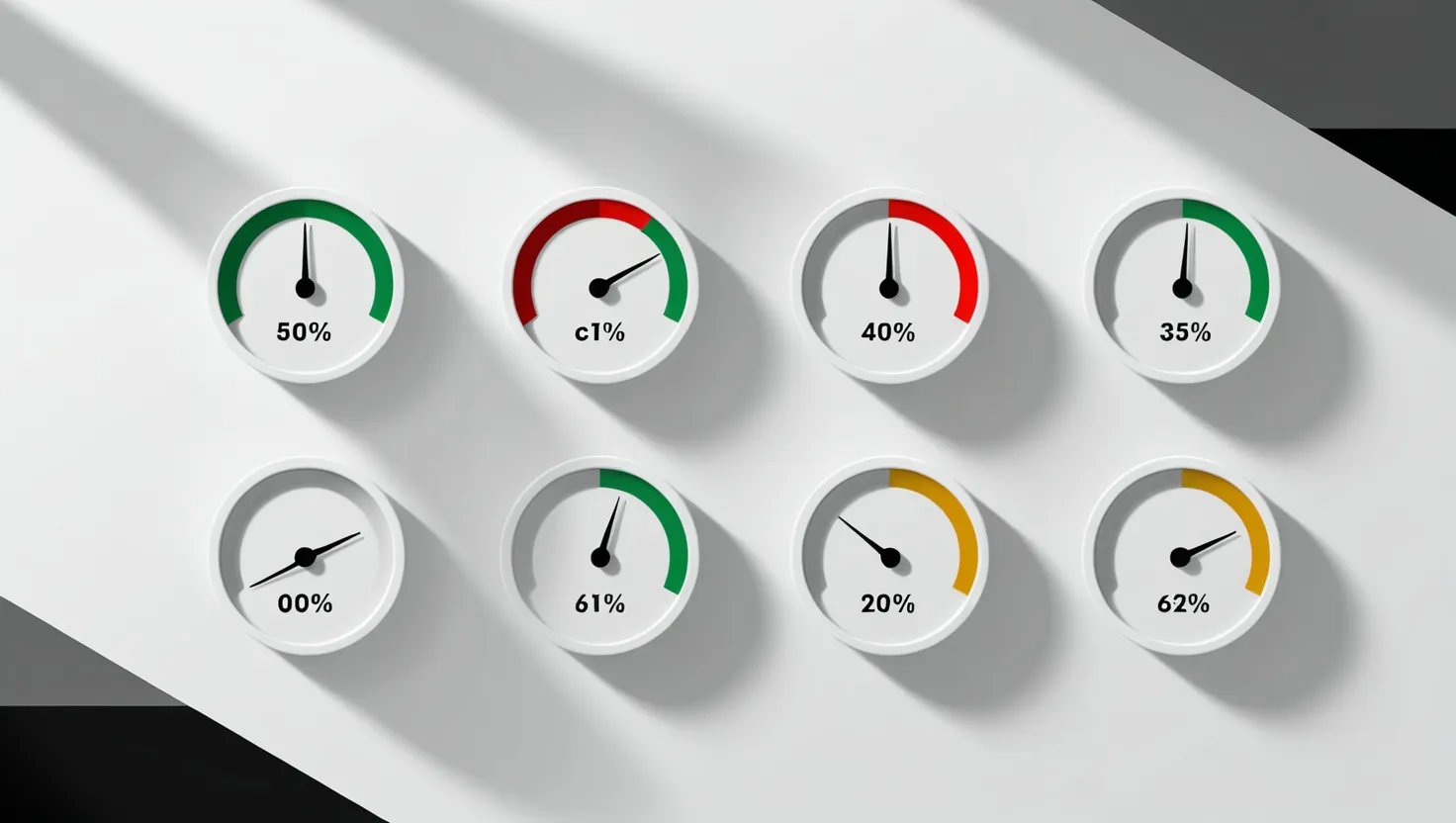If you run a small business, there’s a real chance your relationship with numbers is love-hate. I’ve met business owners who check their bank balance with crossed fingers, and others who keep every receipt in a shoebox. But running a business is not just about passion, big ideas, or even hard work. It’s about knowing what’s behind your numbers and using that knowledge like a tool. Let’s talk about the five financial health indicators you should watch. Think of these as your dashboard lights—you don’t need to be an accountant, but you do need to know when something’s flashing red.
Money coming in and going out is called cash flow. Sounds simple, right? Yet, I know owners who confuse sales with cash in the bank. Let’s make this clear: you can have a shop full of happy customers and still not have enough to pay rent if the cash doesn’t actually reach your account when you need it. Many businesses fail, not because they don’t make sales, but because they run out of real, spendable cash at the wrong moment. This gap is what can force you to beg for a high-interest loan or even pull from your own pocket to make payroll. I’ve seen restaurants that offer popular specials but go broke, all because they didn’t match the timing of ingredient payments with the arrival of customer money.
“Beware of little expenses. A small leak will sink a great ship.” — Benjamin Franklin
The second number to watch is your profit margin. Imagine selling a $4 coffee that costs you $3.90 to make. The profit is only ten cents, and don’t forget to subtract rent, wages, and every other cost. Now, what about if you could sell even one coffee a day for $4, but at a cost of $2? Suddenly, you have breathing room. Profit margin tells you how much money is left after you’ve covered direct costs. This isn’t just theory; restaurants, for example, often shift prices depending on which ingredients are rising in cost. I once worked with a bakery that kept losing money until the owner saw that certain pastries cost more to make than the menu suggested. Raising their prices by even thirty cents made a world of difference. Margins come in two flavors—gross (before rent, wages, or insurance) and net (after everything). Watch both. Even if you’re busy, you might only be busy losing money.
Let’s take a quick pause: Have you ever calculated your real profit margin for each product or service? If not, why not try it with one thing you sell most today?
Now, debt. Most small businesses carry some loans, whether for equipment, a delivery van, or even just to get through lean months. The important question isn’t just how much you owe, but whether you can cover all debt payments from your operating income. The fancy term for this is the debt service coverage ratio. Banks use it all the time in deciding who gets a loan. If your ratio drops below one, it means your business doesn’t even earn enough to pay back its debts. Most lenders want a ratio of at least 1.25. When you check this number regularly, surprises shrink. I’ve seen consulting firms delay a project payment and suddenly struggle to cover their own monthly bank note. With this number in hand, though, you get early warning rather than a nasty surprise.
Inventory turnover is a favorite of mine, especially for retailers or manufacturers. It answers this question: How long does it take for your current inventory to sell? If products move too slowly, you risk paying for storage, insurance, and even see some items go out of date. On the other hand, if your turnover is super high, maybe you’re not stocking enough and missing out on sales. Local toy shops, for instance, calculate turnover in December closely so shelves don’t stay full of unsold items in January. Wasted inventory ties up your cash—money you could use somewhere else. Curious to see how you compare? Count how long stock sits in your storeroom before it’s sold. Faster turnover usually means a healthier—and sometimes more customizable—business.
“Do not save what is left after spending, but spend what is left after saving.” — Warren Buffett
The fifth key is customer lifetime value, or CLV for short. It’s how much a single customer brings in over their total relationship with you. Why does this matter? Sometimes, the first sale barely covers advertising or staff costs, but if that client comes back twenty times, suddenly the math flips. Service businesses especially need this number to know how much they can spend to find and keep each customer. A consulting firm I know decided to double down on loyalty discounts after calculating CLV, and saw profits rise as repeat customers brought steady work and even referrals. When you know your true customer value, you can decide if it’s worth running an ad campaign, launching a loyalty program, or even just picking up the phone to check in with a client.
Think about your own best customers. How many times do they come back? Is your business spending enough energy on keeping them happy, or is all your time spent chasing new faces?
When it comes to real outcomes, let’s put numbers on the board. Research shows that businesses regularly monitoring these five indicators spot trouble about 20% faster than those who don’t. This edge can mean catching a cash shortfall before it becomes an emergency or finding a product that’s quietly draining profits. Businesses that show these numbers to banks or investors are more likely to improve their financing terms by around 15%. Lenders view you as less risky when you’re on top of your numbers. Even more impressive: consistent tracking of these metrics is linked to 30% lower business failure rates during tough economic times.
Now, don’t let all these numbers scare you. Many successful owners I’ve worked with started out using only a simple spreadsheet. Track cash coming in and out. Write down cost versus sales price. Jot down monthly debt payments and see how they relate to your earnings. Update a column on inventory sold each month. You don’t need to buy fancy software until things get busier. The key is to start, and make it a habit.
Is your spreadsheet up to date this month? If not, can you spend ten minutes after reading this to make a quick update? Habits formed now can save lots of trouble later.
Sometimes, business owners make mistakes not for lack of effort but for ignoring seasonal shifts, like holiday sales spikes, or mixing up fixed and variable costs—think rent versus flour for a baker. I’ve seen owners plan as if every week is the same, and land in trouble when summer is slow. The fix? Look back at your numbers month by month. Which months are slow? Which costs never change, and which grow as you get busier?
“Price is what you pay. Value is what you get.” — Warren Buffett
Let’s think about different industries. Take a local restaurant. If ingredient costs creep up but menu prices stay the same, net margins shrink. Track margins to know when to adjust prices. For a consulting firm, the danger zone is clients paying late, which drags down cash flow. Averaging out when clients usually pay helps spot a potential shortfall. In manufacturing, you can look at inventory turnover and see if money is stuck in unsold goods or if certain products just fly off the shelves. Knowing this, you can stock smarter and keep more cash for new opportunities.
Have you ever sat down and compared your numbers to others in your industry? It’s easier than it sounds. Industry average margins, turnover rates, and even debt ratios are public. You can see if you’re lagging or leading without guessing.
Let’s ask: What’s stopping you from checking at least one new indicator this week? Sometimes, it’s fear of what you’ll find, but knowledge beats surprises.
Finally, financial health is more than just survival. It helps you see growth opportunities. Banks and investors want proof, in numbers, that your business is steady and growing. Seeing solid trends in your cash flow, profits, and debts makes you a more attractive bet—and opens doors to new funding or partnerships.
If you remember one thing, remember this: It’s never too late—or too early—to track your numbers. Start with the basics. Build the habit. Use what you find to make decisions before trouble hits. Money is just one tool, but knowing your numbers puts you in the driver’s seat.
“Success is not final; failure is not fatal: It is the courage to continue that counts.” — Winston S. Churchill
Have you checked your dashboard today? The numbers are just waiting to talk to you. Why not listen?






